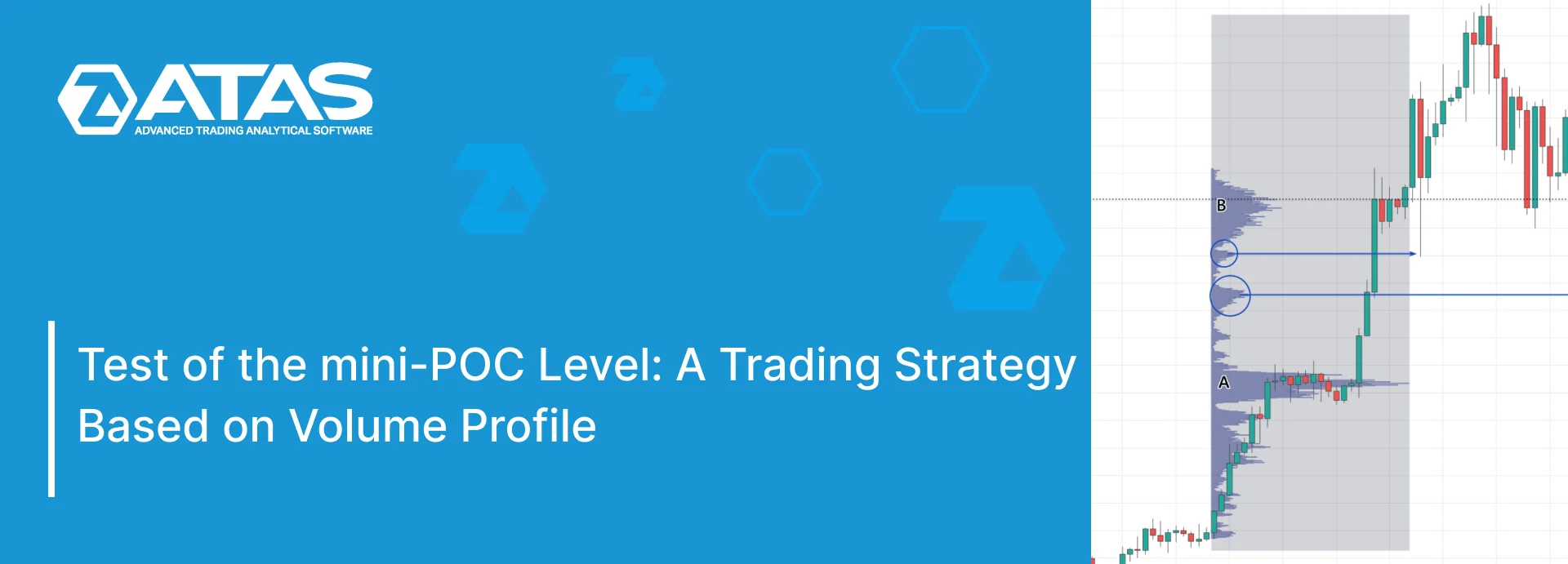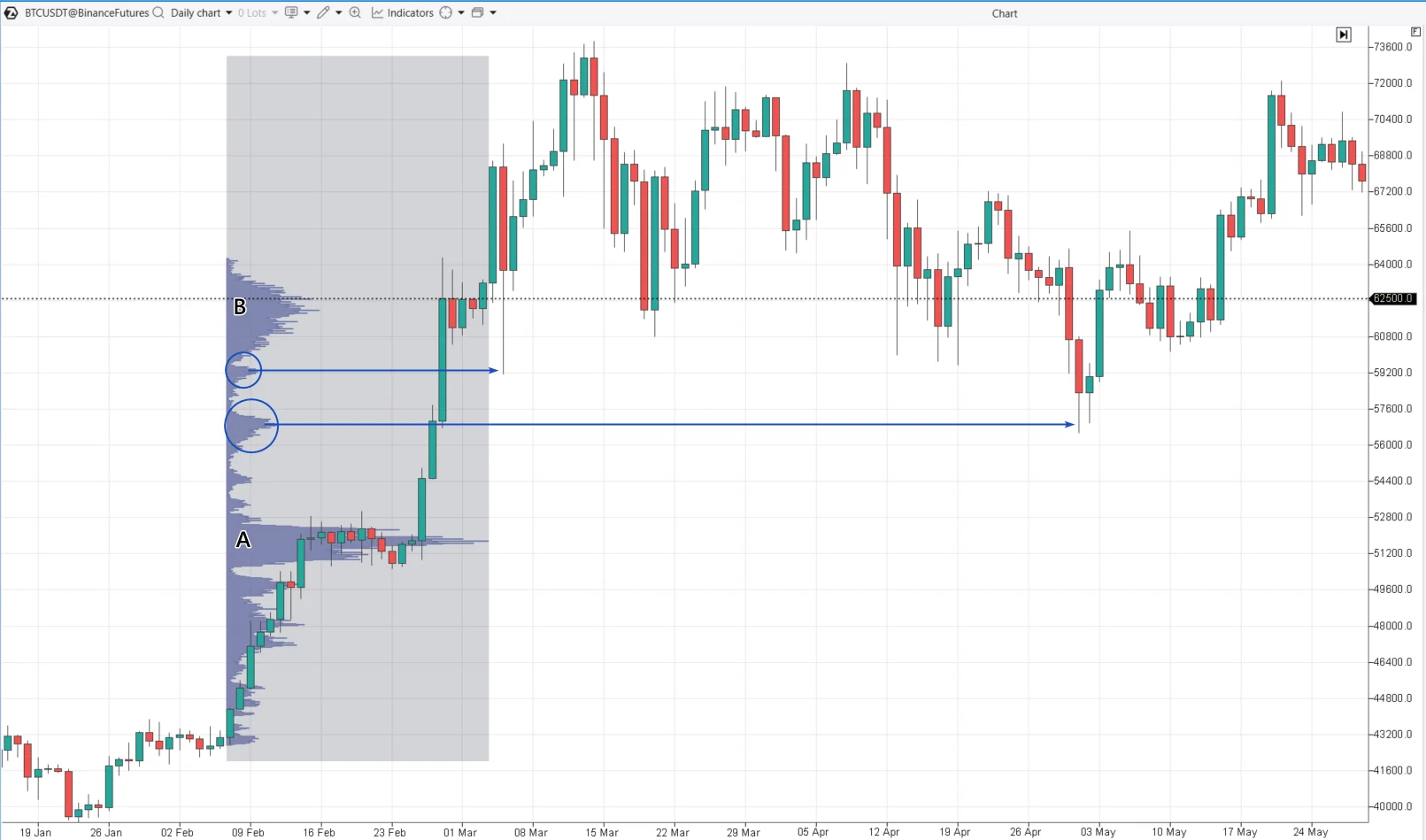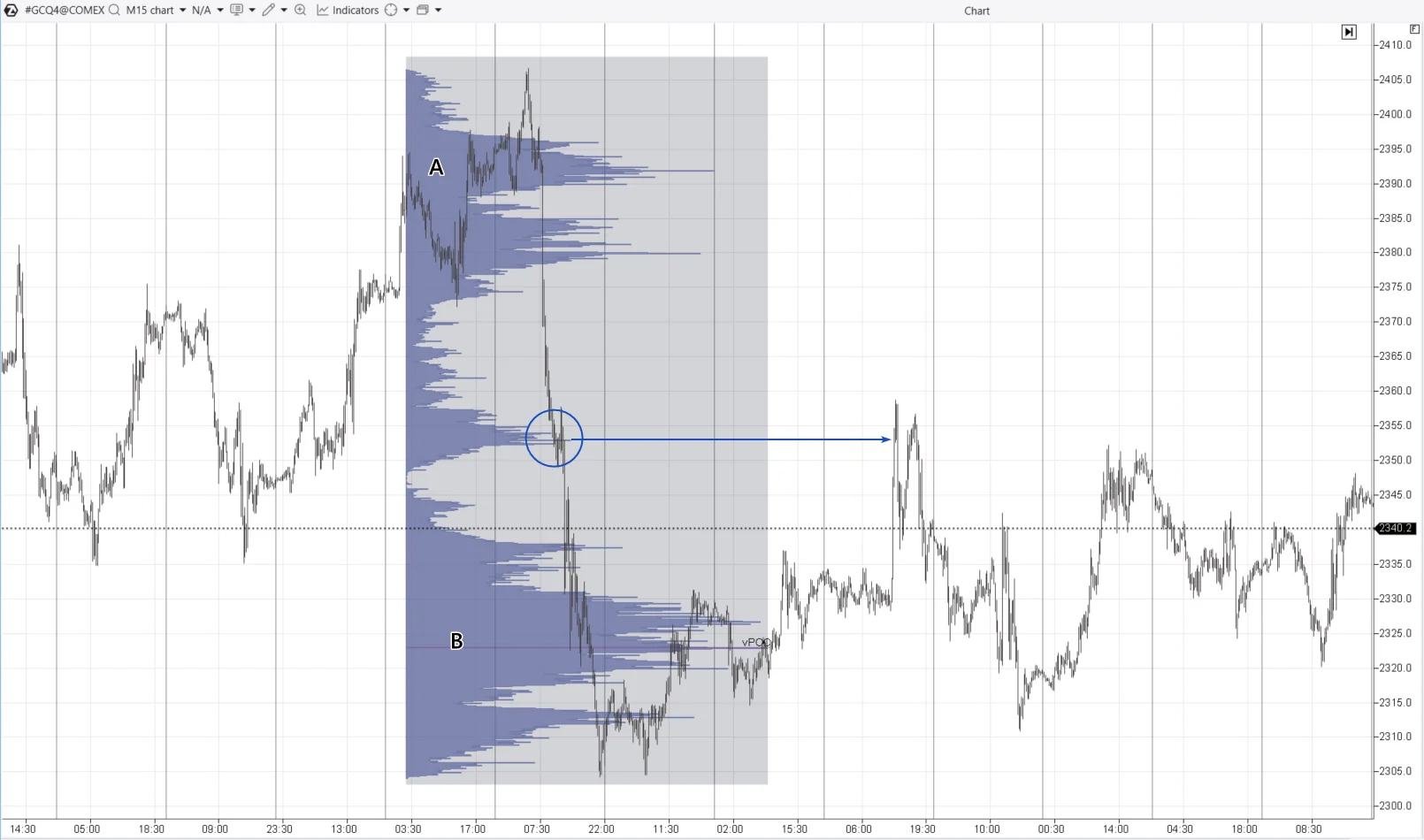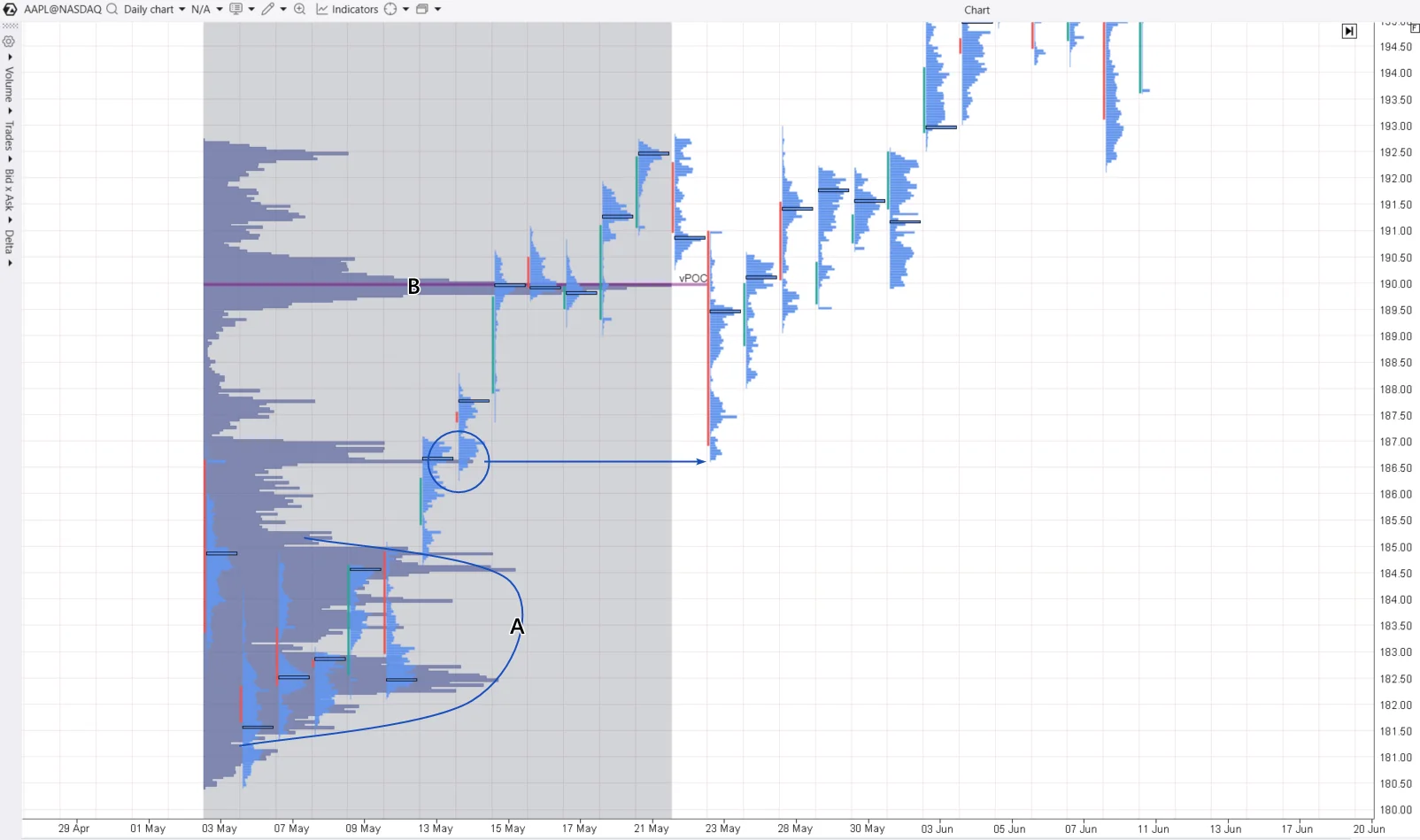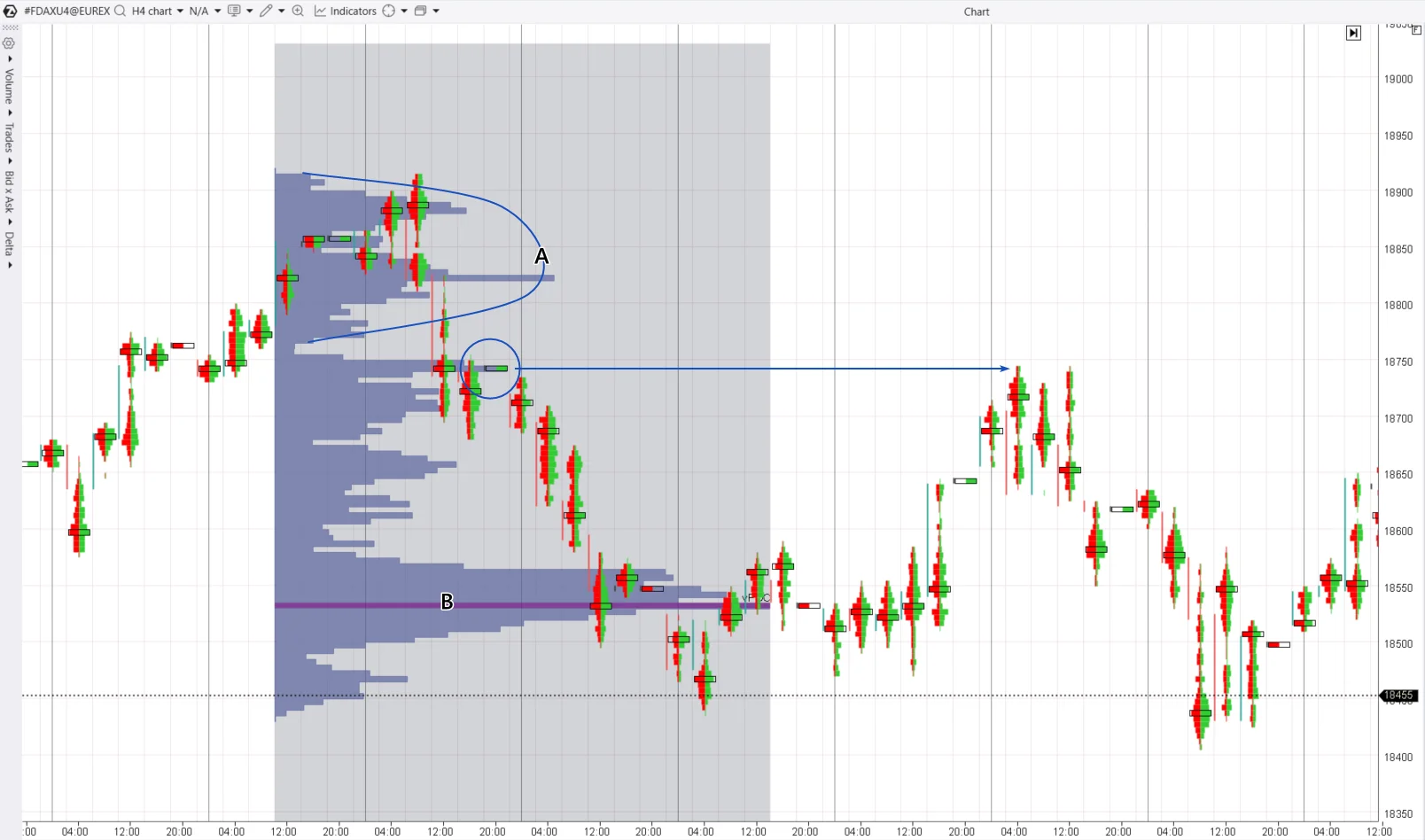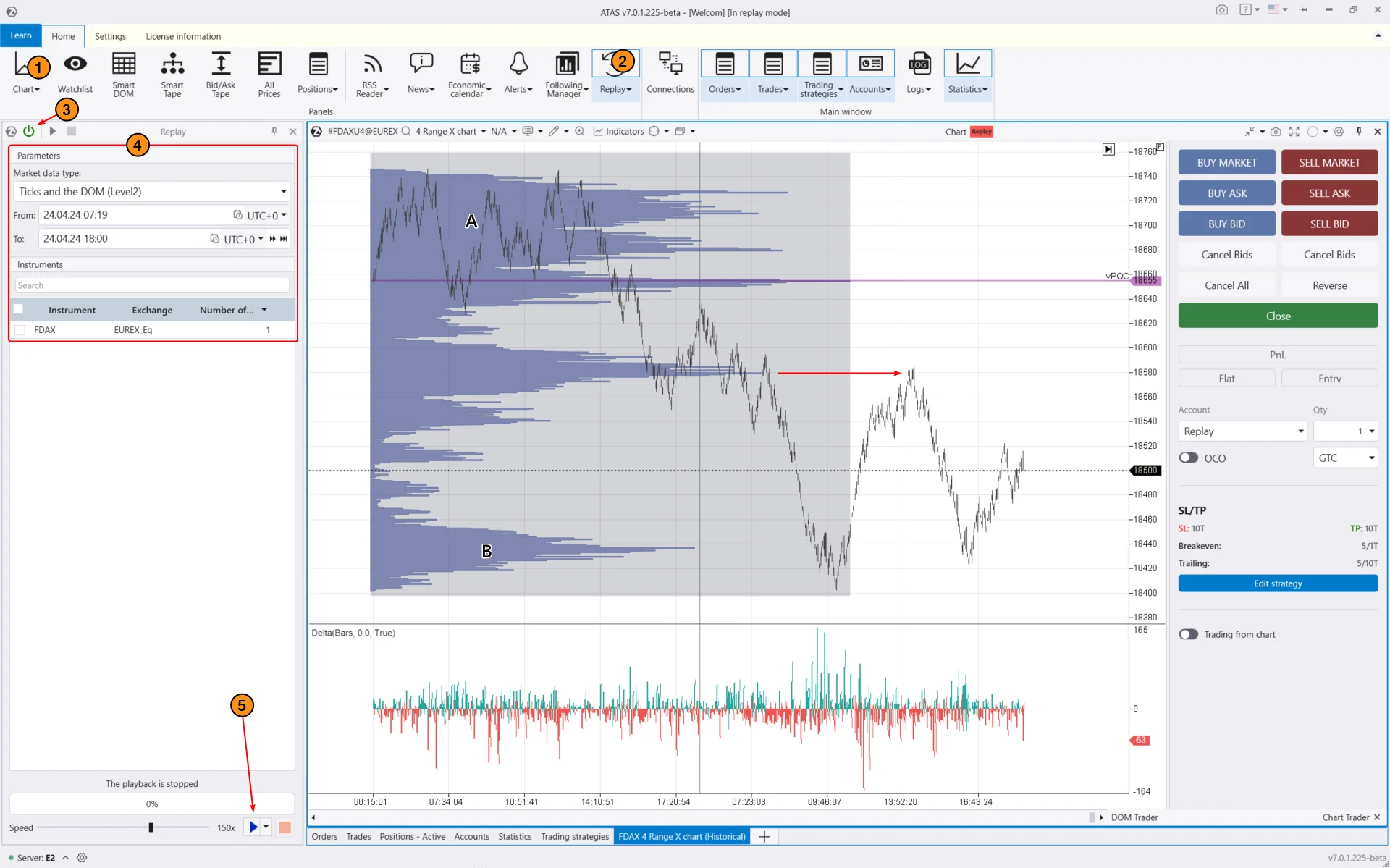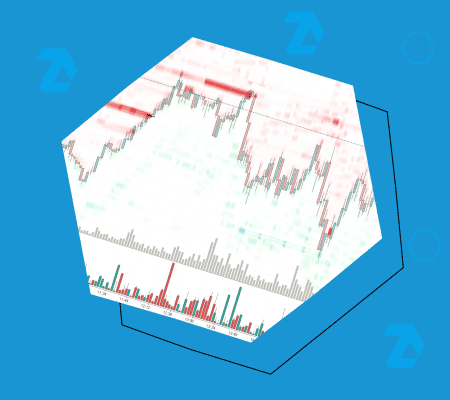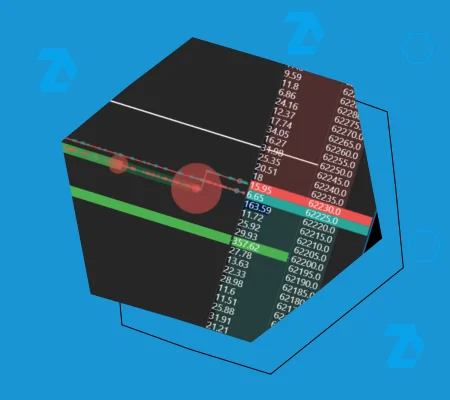A basic plan for building a more detailed strategy for trading mini-POC levels can look like this:
1. Use the market profile to find the transition of supply and demand balance from zone A to zone B.
2. Identify mini-POC along the price path from A to B. This can be subjective based on the profile shape. Ideally, the mini-POC should be clearly defined, narrow, and distinct.
3. Wait for the testing moment. There are no guarantees that the test will occur, so to avoid wasting time monitoring, we recommend using alerts. This also helps track multiple markets.
4. Get confirmation. This can be done using the Delta indicator on a lower timeframe or other tools.
5. Enter the position, setting stop-loss and take-profit levels according to your personal preferences.
After that, manage the position by analyzing chart signals and the fundamental background, and monitoring the situation’s development.
In general, there are two possible outcomes:
Positive outcome – the price surpasses the previous extremum in the direction of the main trend. In this case, you can take profit on half of the position and let the other half run for a longer-term gain.
Negative outcome – the price goes through the mini-POC level with only a minimal bounce. If the bounce is not enough to move the position to breakeven, it should be closed at the stop-loss.

